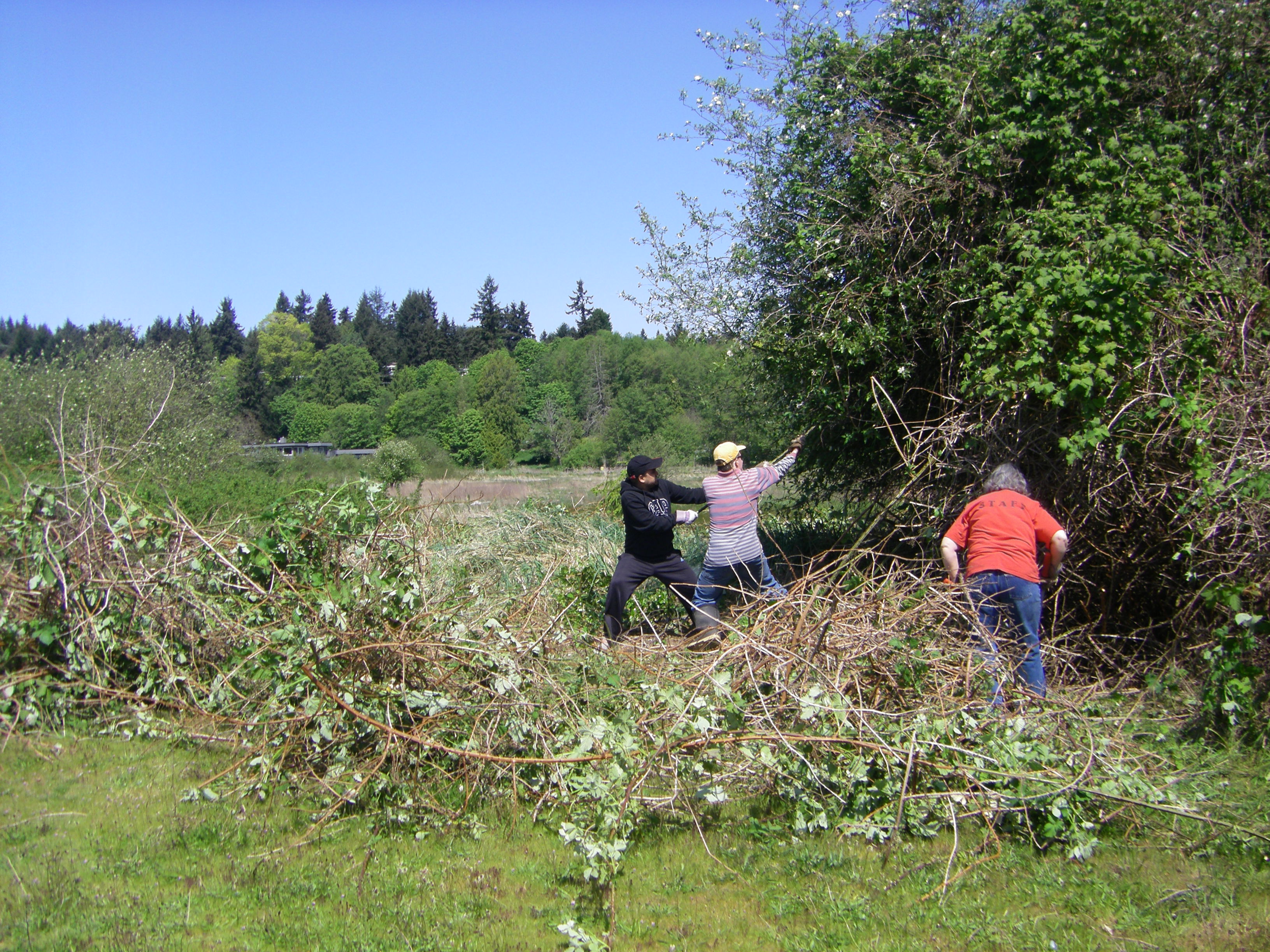Sweeping out the broom
DUC volunteers in B.C. help remove invasive scotch broom at wetland projects.

When Wayne and Betty Pritchard moved to Vancouver in September 1969, the first thing that caught their eye was the evergreen shrub with yellow, pea-like flowers. “It was really pretty, and we thought we should get some for our yard,” recalls Wayne. “We went to the nursery and of course, they were selling it. But one of the employees warned us against buying it.”
The employee explained to the Pritchards that this plant grew quickly and spread aggressively. “He told us it would spread from our yard to our neighbours’. So we quickly changed our minds.”
That day, the Pritchards walked away from scotch broom (Cytisus scoparius). But by 2000, they couldn’t avoid the plant any longer. “It was everywhere,” says Wayne.
Scotch broom: from “in” to “out”
Native to Mediterranean parts of Europe, scotch broom was introduced on Vancouver Island in the 1800s as an ornamental plant. Today, it continues to grow on Vancouver Island, the Queen Charlotte Islands, as well as B.C.’s mainland.
Its spread wasn’t accidental. In addition to being sold at nurseries for many years, B.C.’s transportation department embraced the plant for its ability to stabilize banks with its deep root structure.
But people soon realized that this plant was more of a hazard than an ally. Scotch broom typically grows one to two metres high, and spreads quickly through its seeds and lateral bud growth.
“It’s a problem at project sites,” says DUC conservation specialist, Sarah Nathan. She explains that the plant grows in upland areas where it outcompetes native shrubs like salmonberries and black twinberries, both of which provide shade and cover to songbirds.
Scotch broom can also fuel wildfires, and limit the movement of land-locked wildlife, who are unable to navigate their way through its dense growth.
“We have lots of invasive species here in B.C., but scotch broom is one of the worst,” says Wayne.

©DUC
Part of the solution: from admirer to “buster”
Approximately 10 years ago, Wayne, who by this point was a DUC volunteer and soon to be a member of the board of directors, had enough of scotch broom. He began organizing days of action at local DUC projects.
As part of this annual event, volunteers spend a day in early spring (before the plant has produced its seeds) pulling and digging up scotch broom. “It’s really hard work, but we have fun while we’re doing it,” says Wayne. These events are sponsored by local companies and company branches (like the Royal Bank of Canada and Cascade Recovery), whose staff also participate in removing the scotch broom.
Efforts have been paying off. Conservation staff have observed a decline in scotch broom at DUC wetland projects on the southeastern side of Vancouver Island.
“When you have a group of 20 dedicated volunteers, they can remove an infestation in two hours. If I were to go out with a couple colleagues, it would take all day,” says Nathan.
“The volunteers are just great,” she adds. And one volunteer in particular is leading these “sweeping” changes.
It has been nearly 50 years since Wayne considered planting scotch broom in his yard. Today, he’s a dedicated “broom buster” with no intentions of slowing down. Are there plans for a 2018 broom busting event? “We just need to set a date,” he says.



